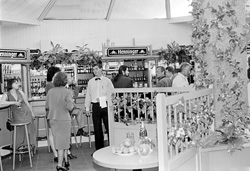Credit Is Last Chance For Middle Class

Ukraine’s first small businesses are over ten years old (of course, those that have survived). Children of Ukraine’s first businessmen are young men and women, but Ukrainian society is still unsure whether it needs small and medium business. Medium business has no time to wait for an answer and is struggling to survive, a struggle fought day in and day out. In Ukraine, medium business employs more than 2.1 million persons and the economy’s small business sector produces 7% of GDP. Accordingly, there are 3 small businesses per 1,000 residents. A drop in the ocean, as there are an average of 74.2 such businesses in the United States and 68 in Italy. In France, small business makes up 55-62% GDP, and Ukraine lags a long way behind Poland, Slovenia, the Czech Republic, Russia, and other postcommunist states.
“Small business is still something exotic in the Ukrainian economy, while medium business is a vague notion,” says Liudmyla Vorotina, Ph.D. in economics. “Despite constant declarations of support for small and medium business, it seems that the state is still trying to convince itself that transformations in the Ukrainian economy are possible without developing the long-suffering middle-sized entrepreneurship. In addition, there is another aspect to the development of small and medium business, namely the number of effective small and medium businesses is directly linked with the formation of the middle class as the guarantee of Ukraine’s democratic future. More to the point, this guarantees consists (to use a familiar quotation) in the critical mass of people “not rich enough to buy other peoples’ votes, but not poor enough to sell theirs.”
The typical problems facing small and medium business here are generally known, the biggest being financial famine; often, one does not have money to start a business or expand it.
Of late, an option in solving this problem has been the attraction of funds via international treaties; World Bank, EBRD, German- Ukrainian Foundation, and other foreign financial institutions offering credit lines to finance small and medium business. Below one such project is discussed in an interview with Viktor POLUREZ, deputy chairman of the board, Finance and Credit Commercial Bank.
V. P.: Finance and Credit is taking part in a targeted World Bank program meant to support small and medium business in Ukrainian regions where coal mines are being closed (Luhansk, Donetsk, Cherkasy oblasts, and so on). The program also envisions creating jobs for miners who lose their jobs. Since funds are channeled only to these regions, an important condition in carrying out this program is the presence of our bank offices there. Even now you can contact them to find out about the terms and conditions of financing.
The Day: What basic problems do all those small and medium businesses have to cope with?
V. P.: The number one problem is lack of working capital and fixed assets. There are various credit programs but they are meant for financially stable enterprises having tangible liquid collateral that exceeds the principal. Our small and medium businesses need a great deal of credit, but they cannot meet the collateral requirements, so out of a great many requests one must select ones that can be agreed on with the World Bank. This is another serious problem.
The Day: How much direct foreign investment does Ukraine need?
V. P.: Everybody wants a loan, but there are many other difficulties. In most cases a foreign financial institution will issue a loan if the borrower can make monthly payments not only on the interest, but also to pay down the principal. Most our small and medium businesses are unable to do so starting the first month. But microloans are extremely popular even in Albania. A small shop owner will borrow several thousand dollars and is certain to return it in a month or two. Our business is young and needs time to get on its feet, although I must say the program provides for a soft period.
The Day: Who can use this period?
V. P.: Only enterprises borrowing sufficiently large amounts, say, over $500,000. Naturally, such loans can be shouldered only by a business that already has something to its name. As a matter of fact, private businessmen can borrow between $15,000 and $2,250,000. Accordingly, a project to be financed must cost between $20,000 and $3 million.
The Day: What are the realities and prospects of the credit market in Ukraine?
V. P.: Microloans are the most viable pattern, and we believe it is the most promising one. An amount borrowed by a small business (like the owner of a small bakery or restaurant) is secured by its property, meaning that the borrower is sure to honor all commitments to the bank. With large enterprises the risk is much greater. Our legislation is subject to frequent changes, and nobody can be sure of what will happen tomorrow. And we issue large loans for a term of up to five years. You will agree that it is a very long period, given Ukraine’s conditions. Loans are given and repaid in a foreign currency, so the exchange rate is a very important factor in getting such money back. It’s good if a given business has foreign contracts, because that way it can have certain foreign exchange reserves. Otherwise this enterprise will have to sell its hryvnias on the interbank currency market to get the amount in a foreign currency to pay the debt. It is at this point that exchange rate fluctuations can deal a heavy blow. Also, predicting these fluctuations is becoming more and more difficult.
The Day: How does a commercial bank benefit from such credit projects?
V. P.: We are optimists, and we wouldn’t be in this business if we didn’t believe in it. Also, one has to remember that our customers badly need such transactions. We want to support domestic business which is only natural.






